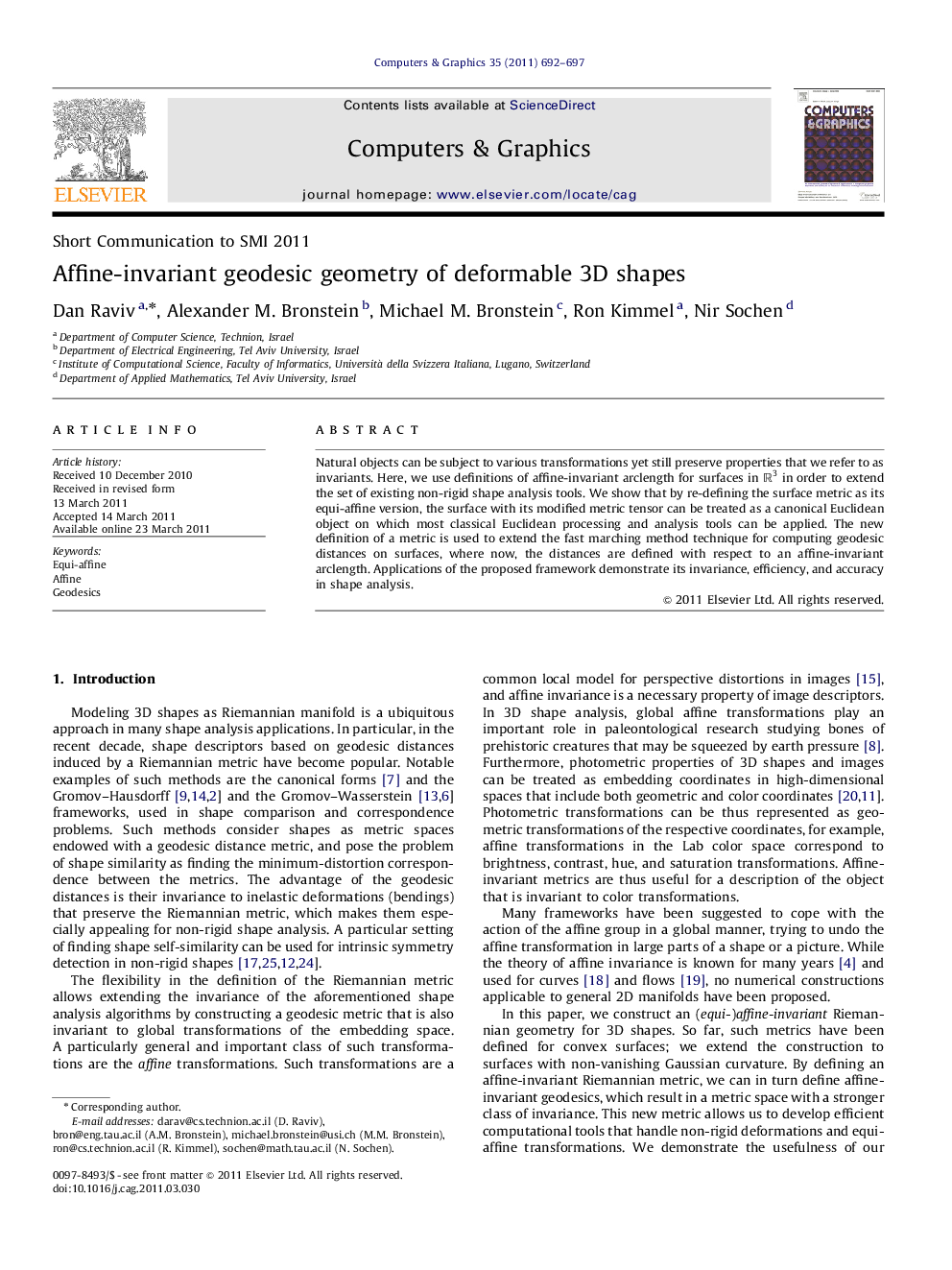| Article ID | Journal | Published Year | Pages | File Type |
|---|---|---|---|---|
| 442068 | Computers & Graphics | 2011 | 6 Pages |
Natural objects can be subject to various transformations yet still preserve properties that we refer to as invariants. Here, we use definitions of affine-invariant arclength for surfaces in R3R3 in order to extend the set of existing non-rigid shape analysis tools. We show that by re-defining the surface metric as its equi-affine version, the surface with its modified metric tensor can be treated as a canonical Euclidean object on which most classical Euclidean processing and analysis tools can be applied. The new definition of a metric is used to extend the fast marching method technique for computing geodesic distances on surfaces, where now, the distances are defined with respect to an affine-invariant arclength. Applications of the proposed framework demonstrate its invariance, efficiency, and accuracy in shape analysis.
Graphical abstractFigure optionsDownload full-size imageDownload high-quality image (108 K)Download as PowerPoint slideHighlights► We introduced a numerical machinery for computing equi-affine-invariant geodesic distances. ► The proposed tools were applied to applications, like symmetry detection, finding correspondence, and canonization for efficient shape matching. ► We have extended the ability to analyze approximately isometric objects, like articulated objects, by treating affine deformations and non-rigid ones. ► As our analysis is based on local geometric structures, the affine group could in fact acts locally and vary smoothly in space as long as it is encapsulated within our approximation framework.
